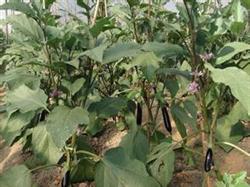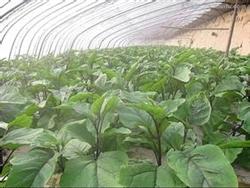Problems needing attention in using pesticides in pollution-free cultivation of eggplant

Cultivation of pollution-free eggplant, to prevent the main guiding ideology to treat eggplant diseases and insect pests, if the disease and insect pests occur, first of all should consider integrated control, such as the use of natural enemies of pests (Trichogramma, Coccinella septempunctata, etc.), pathogens "natural enemies"(such as Jinggangmycin, streptomycin, avermectin, etc.), and with other high efficiency, low toxicity, low residue, and friendly to the surrounding environment chemical pesticides. First of all, we should pay attention to avoid the use of the following pesticides: First, the production of prohibited pesticides: 666, DDT, insecticide, fluoroacetamide, arsenic, Xilisheng, San Li San. II. Highly pesticide: methamidophos, phorate (3911), fenitrothion (Su Hua 203), parathion (1605), parathion methyl (methyl 1605), systemic phosphorus (1059), fenitrocarb, fosfamide, isoprophos, trichlorothion, omethoate, isoamidophos, chloropicrin, dibromochloropropane, 401, fenamethrin, isosalhos methyl. III. High residue pesticides: dicofol and chlordane. IV. Pesticides compounded with the above-mentioned high pesticides and high residue pesticides: such as products compounded and mixed with methamidophos and hydroamidophos. 5. Pesticide varieties that can be registered without verification on vegetables. Secondly, we should pay attention to the problem of safe interval of pesticide application: what is the safe interval of pesticide application? Pesticide residues can be gradually reduced to allowable standards through the action of enzymes in vegetables, the action of soil microorganisms, isomerization or decomposition of pesticides themselves, photolysis and alkaline hydrolysis, especially under the influence of climatic conditions. The number of days between the last application and the harvest date ensures that the residues of harvested vegetables will not exceed the standard, which is called safety interval. Generally, the temperature is 7-10 days when the temperature is high, and 10-15 days when the temperature is low. If the safety interval for a specific pesticide is not clear, it is best to last apply it half a month before vegetables are marketed.
- Prev

Notes on the cultivation of Dutch beans
Notes on the cultivation of Dutch beans
- Next

Pollution-free production and cultivation techniques of eggplant in greenhouse
1. Pollution-free cultivation technique of eggplant in early spring in greenhouse the eggplant was cultivated in early December in Bozhou area and planted in spring early greenhouse in mid-February. 1.1 the climatic characteristics of selecting excellent disease-resistant varieties are as follows: weak light, low temperature, temperature and light after planting.
Related
- Where is it suitable to grow horseradish in China? it is expected to see the middle altitude horseradish in Alishan.
- How to prevent tomato virus disease reasonably? (Control methods included)
- Many people like to plant towel gourd on the balcony. What are the main points of this method and management?
- What crops can chili peppers be mixed with?
- Fertilization techniques and matters needing attention in Tomato
- What are the grafting techniques for peach seedlings in spring?
- Harm and control methods of root swelling disease of Chinese cabbage
- What are the pests of sweet potatoes? How to prevent and cure it?
- Symptoms, causes and Control methods of navel Rot in Tomato
- The cause of "Cucumber rotten bibcock" in Farmers' planting Cucumber and its Control Plan

